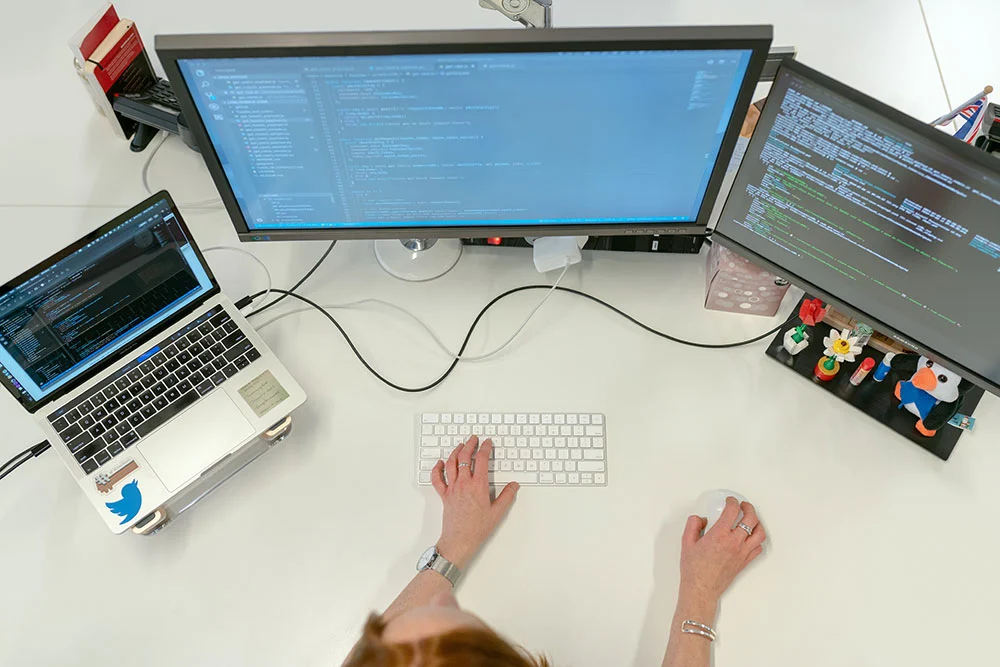As the world becomes increasingly reliant on technology, it is essential to be able to translate technical jargon into everyday language. IT translation refers to the process of translating technical terms into plain language that non-technical individuals can easily understand. In this blog, we will discuss the importance of IT translation and explore the benefits, processes, tools, and future of IT translation.
The Problem with Technical Jargon
Technical jargon is a set of words or phrases that are used in a particular industry or field. Common examples include “API,” “encryption,” and “server.” While technical jargon is useful for communicating with peers, it can be a barrier for non-technical individuals who don’t understand the language. Technical jargon can lead to miscommunication and misunderstandings, which can be costly for businesses.
The Benefits of IT Translation
IT translation involves translating technical jargon into plain language that anyone can understand. The benefits of IT translation include improved communication and collaboration, increased productivity, and better decision-making. When everyone understands the language being used, it eliminates confusion and saves time.
The Process of IT Translation
The process of IT translation involves several steps. The first step is to understand the context and audience. This means identifying who the audience is and what their knowledge level is. The next step is to identify technical terms and translate them into everyday language. It is important to be accurate and clear in the translation. The final step is to review and refine the translation as necessary.
Tools for IT Translation
There are several tools available for IT translation, including glossaries and translation memory software. Glossaries are lists of technical terms and their definitions, while translation memory software stores previously translated content, making it easier to translate similar content in the future. While these tools can be helpful, it is essential to remember that they are not a substitute for human input and context.
The Future of IT Translation
As technology advances, the future of IT translation is likely to involve more automation. Artificial intelligence and machine learning are already being used to translate content, and this trend is likely to continue. However, it is important to remember that human input and context are essential to accurate and effective IT translation.
Here are some of how IT translation services can benefit global businesses:
Increased reach
With IT translation services, businesses can translate their website, marketing materials, and other content into multiple languages, allowing them to reach a larger audience. This can help them expand into new markets and increase their customer base.
Improved customer experience
By providing content in the customer’s native language, businesses can improve the customer experience, which can lead to increased customer loyalty and higher sales.
Better communication
IT translation services can help businesses communicate more effectively with international partners, clients, and customers. This can lead to smoother transactions, better relationships, and increased revenue.
Enhanced reputation
By providing accurate translations, businesses can enhance their reputation and credibility in international markets. This can lead to more business opportunities and increased revenue.
Compliance with regulations
Many countries have regulations that require businesses to provide information in the local language. IT translation services can help businesses comply with these regulations, avoiding fines and other penalties.
Overall, IT translation services can be a valuable asset for global businesses, helping them overcome language barriers and expand into new markets. With the right IT translation partner, businesses can improve their communication, increase their revenue, and build a strong reputation in international markets.
Overview of IT Translation and How it Works
IT translation, also known as software localisation, is the process of translating software, websites, or any other IT-related content from one language to another. IT translation is crucial for companies that operate in multiple regions and want to provide their products or services in the local language.
The process of IT translation involves several steps:
Preparation
The first step is to prepare the software or website for translation. This involves extracting the content that needs to be translated, such as user interfaces, menus, and help files.
Translation
The next step is to translate the content into the target language. This is typically done by professional translators who are familiar with the IT industry and the specific terminology used in the software or website.
Localisation
After the content has been translated, it needs to be localised for the target audience. This involves adapting the content to the local culture, customs, and preferences. For example, this may involve changing the date and time format or adjusting the color scheme.
Testing
Once the translation and localisation are complete, the software or website needs to be tested to ensure that everything is working as expected. This includes testing the user interfaces, menus, and help files to make sure that they are all functioning properly in the target language.
Delivery
Finally, the translated and localised content is delivered to the client. The client then integrates the content into their software or website and releases it to their users.
In summary, IT translation is a complex process that involves preparing, translating, localising, testing, and delivering IT-related content in another language. This process requires specialised knowledge and expertise in both translation and the IT industry.
What is Information Technology and its Branches?
Information Technology (IT) refers to the use of computers, software, and other digital technologies to manage and process information. It encompasses a wide range of areas, including hardware, software, networking, and cybersecurity.
Here are some of the major branches of Information Technology:
Software Development
This involves the creation and maintenance of software applications that run on computers, smartphones, and other digital devices.
Networking
This branch of IT deals with the design, installation, and maintenance of computer networks, including local area networks (LANs), wide area networks (WANs), and cloud-based networks.
Cybersecurity
This is the practice of protecting computer systems, networks, and sensitive data from unauthorised access, theft, and damage.
Database Management
This involves the creation, maintenance, and administration of large databases of information, including customer data, financial records, and inventory data.
Web Development
This branch of IT involves the creation of websites and web applications, including the design, development, and maintenance of web pages and web-based software.
Artificial Intelligence (AI) and Machine Learning (ML)
This field of IT involves the development of algorithms and software that can learn and improve from data, and make predictions or decisions based on that learning.
Cloud Computing
This involves the use of remote servers and internet-based software to store, manage, and process data, instead of relying on local hardware and software.
Conclusion
Effective communication in the IT industry heavily relies on IT translation, which plays a crucial role in converting technical language into plain language that improves collaboration, decision-making, and comprehension. Although automation is expected to play a bigger role in the future of IT translation, human input and context will always remain essential for accurate and effective translation. Therefore, prioritising IT translation in the IT industry and investing in the necessary tools and training is crucial for success in IT translation.
Related Posts

Get a quote today
"*" indicates required fields
Subscribe today to receive the latest insights and updates from Sylaba Translations











